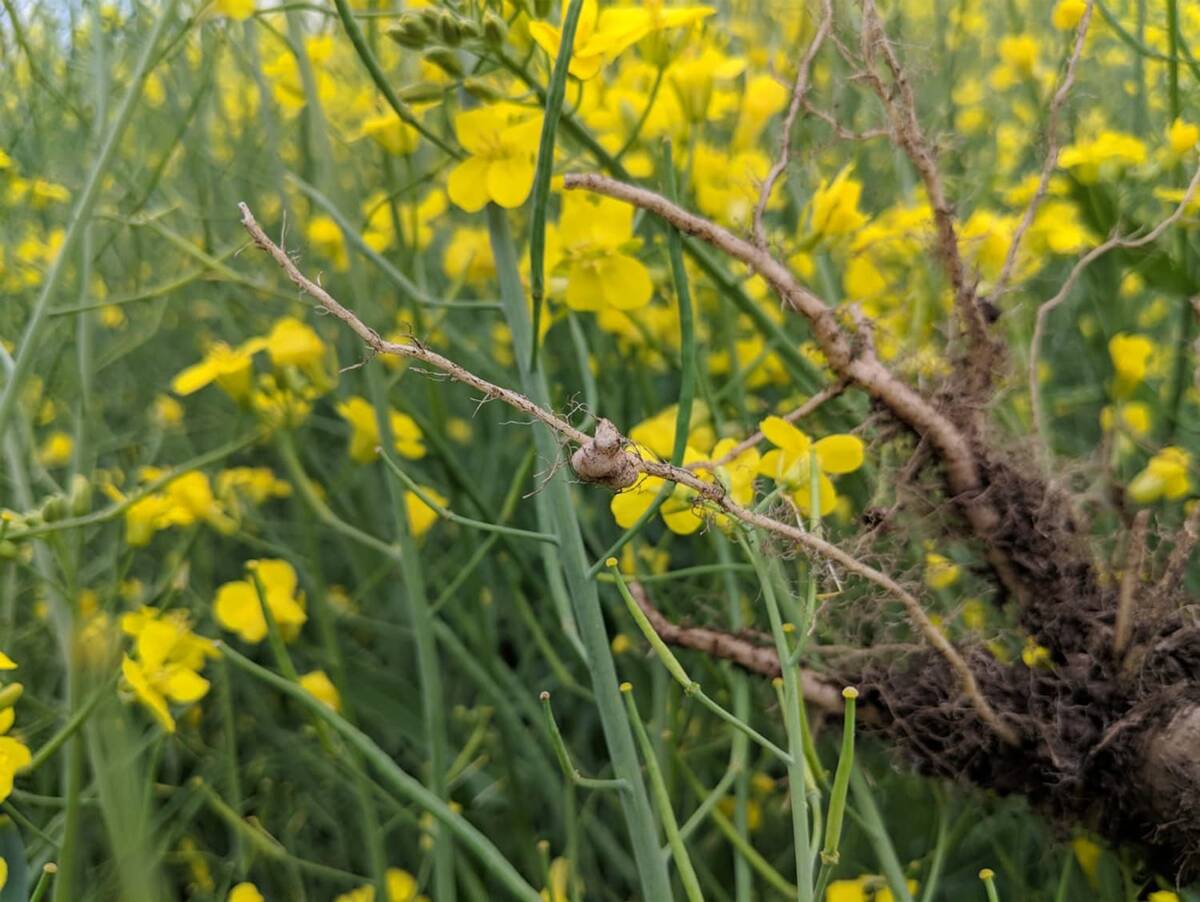ZEHNER, Sask. – Cheaper to grow, easier to manage and more profitable than grain.
When Don Glen looked for reasons to convert his land to hay production, those were three factors that swayed his decision.
The Zehner farmer seeded his first acre of alfalfa nearly two decades ago and has been converting grain land to forages ever since.
Glen turned his back on grain for economic reasons and despite low prices for forage, he says he has no regrets.
He, his son Gerald and daughter Dawn normally produce and sell between 35,000 and 50,000 high quality, square alfalfa and Carlton brome grass blend hay bales annually.
Read Also

Going beyond “Resistant” on crop seed labels
Variety resistance is getting more specific on crop disease pathogens, but that information must be conveyed in a way that actually helps producers make rotation decisions.
“Hay has given us a good life on the farm. Like a lot of farming these days we’ve had to work off the farm to make all the ends come around and meet, but I can say that the farm always finishes in the black,” said the southern Saskatchewan farmer.
“That’s more than I can say for a lot of grain growers.”
Gerald Glen says the flexibility of hay production has also allowed the farm to cut production in years when price and demand were low. Using low-cost haying techniques, the family has managed to turn a profit even in the toughest years.
In their farmyard, the Glens’ aging grain equipment sits idle in a shed while their hay inventory bulges under hay barns and tarps.
“Right now we have a lot of hay on hand (35,000 bales). We knew that sales had been low going into this year so we cut production. We just didn’t bale as much land,” Gerald said.
This year, the family produced 22,000 bales.
The demand for hay in southern Saskatchewan has changed in the last few years.
The market for square bales has been shrinking as more cattle producers opt for larger, round bales.
Wet conditions in southern and southeastern parts of Saskatchewan have also softened the market for hay.
The Glens produce bales with different blends of alfalfa to cater to different markets. Bales with a high percentage of alfalfa are preferred by racehorse owners. Leaner blends are good for riding horses and other sporting and working animals, and low alfalfa blends are fed to cattle and sheep.
The best of the hay crop is stored in sheds while the rest is stored outdoors under tarps.
Neatly stacked in a steel shed, 10,000 green bales sit on pallets and 3,500 more are stored 75 metres away in another building.
The storage sheds were purchased at auction or as salvage.
“It’s doing it with the fewest expenses possible that makes it pay,” said Don.
Driving up the hill to the Glen farm, it is hard to tell whether the family is in the hay business or if they own a used baler dealership.
Twelve New Holland balers sit in a neat row in front of the farm, a 13th sits in the crowded farmyard and is being rebuilt from a blend of new and used parts from the farm’s extensive inventory.
Nearly all the balers are ready for the field at a moment’s notice.
“You can’t mess around fixing. When the hay is ready you had better be baling. You can’t afford to do that with new equipment,” said Don.
During haying season, if a baler breaks down, it is parked immediately and another serviced machine is put to work. Repairs will wait until haying is done or rain comes.
Getting high yields from alfalfa fields also improves the farm’s bottom line.
Soil samples are taken, fields are aerated every two years and careful application of phosphorus, sulfur and some other minerals help extend the productive life of the hay land to beyond a dozen years.
The Glens have also planted shelterbelts to trap snow on their land.
“We now get as much production on the hills as we do in the low lying areas,” Don said.
Despite a large inventory of hay and prices that are nearly half what they were five years ago, Don remains optimistic.
“We’ll probably get some more cattle to eat some of this hay and the rest will sell. It almost always does and if the market changes permanently, so will we. We did it before.”















